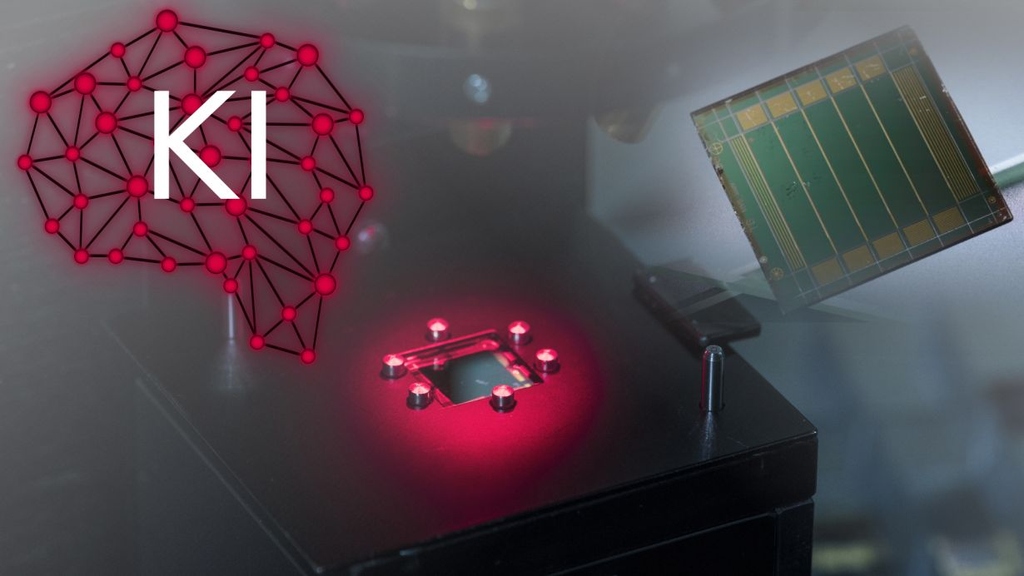
In the lab, perovskite solar cells show high efficiency in converting solar energy into electricity. In combination with silicon solar cells, they could play a role in the next generation of photovoltaic systems. Now researchers at KIT have demonstrated that machine learning is a crucial tool for improving the data analysis required needed for commercial fabrication of perovskite solar cells.
Read Article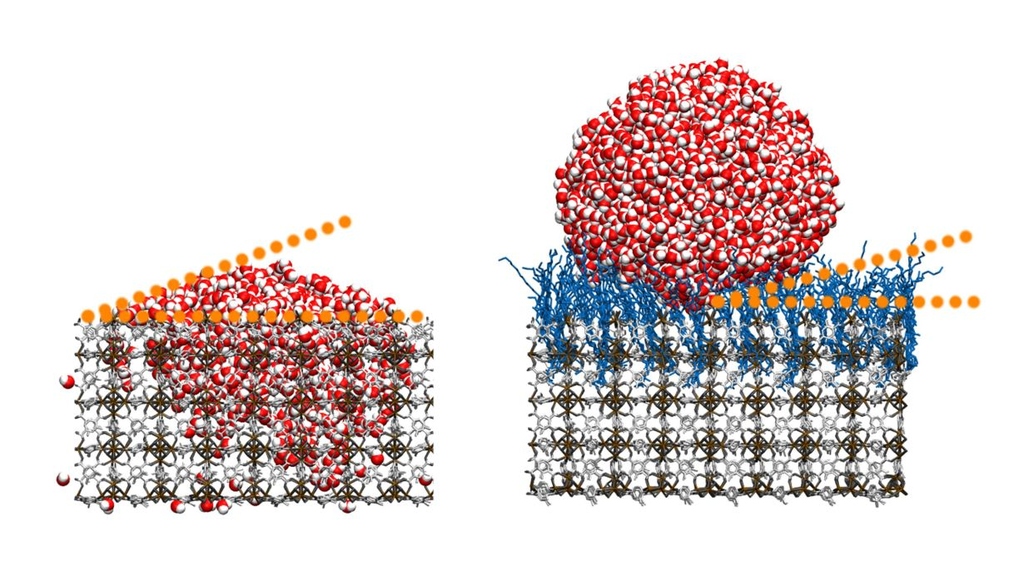
Scientists from Karlsruhe Institute of Technology (KIT) and the Indian Institute of Technology Guwahati (IITG) have developed a surface material that repels water droplets almost completely. Using an entirely innovative process, they changed metal-organic frameworks (MOFs) – artificially designed materials with novel properties – by grafting hydrocarbon chains. The resulting superhydrophobic (extremely water-repellent) properties are interesting for use as self-cleaning surfaces that need to be robust against environmental influences, such as on automobiles or in architecture.
Read Article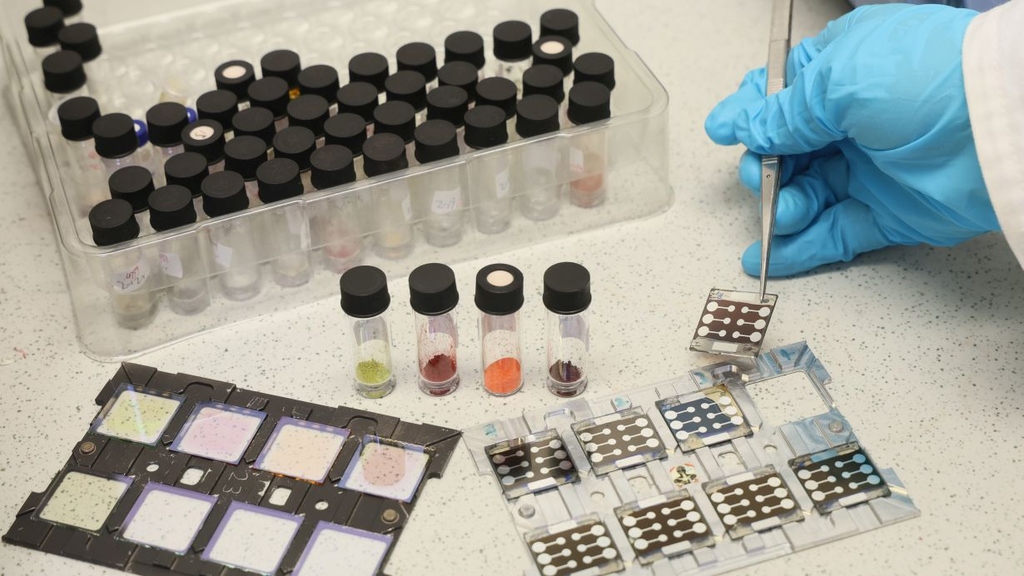
Perovskite solar cells are a flexible and sustainable alternative to conventional silicon-based solar cells. Researchers at the Karlsruhe Institute of Technology (KIT) are part of an international team that was able to find – within only a few weeks – new organic molecules that increase the efficiency of perovskite solar cells. The team used a clever combination of artificial intelligence (AI) and automated high-throughput synthesis. Their strategy can also be applied to other areas of materials research, such as the search for new battery materials.
Read Article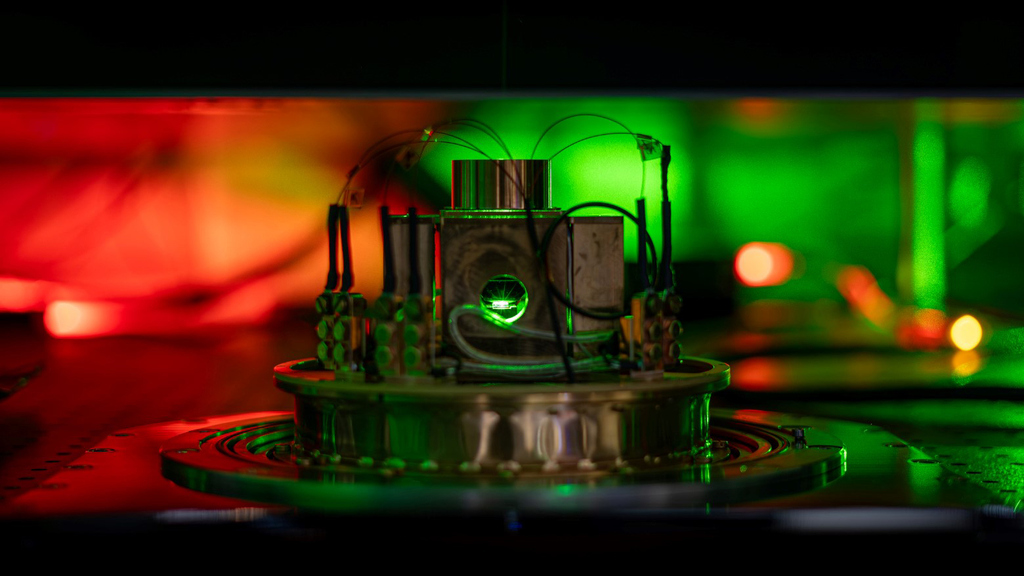
For the past ten years, the Centre for Quantum Science and Technology (IQST) at the Universities of Stuttgart and Ulm and the Max Planck Institute for Solid State Research (MPI-FKF) has been at the forefront of interdisciplinary research in quantum science and technology. Its mission extends beyond basic research to focus on potential applications and their benefits for society. With the Karlsruhe Institute of Technology (KIT), a further supra-regional institution has now joined the world-renowned centre, marking a significant step towards a state-wide network for the scientific "quantum community" in Baden-Württemberg.
Read Article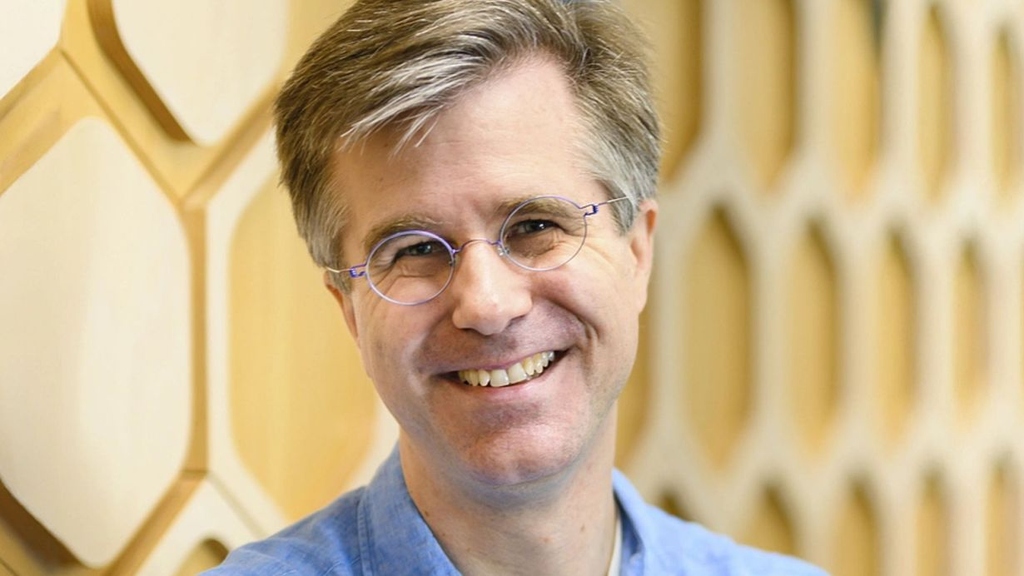
With his research, Professor Christopher Barner-Kowollik makes it possible to develop high-precision materials and surfaces for special applications in nanotechnology and materials science. Now the macromolecular chemistry expert has been selected for an Alexander von Humboldt Professorship. Next year he is expected to conduct research on new materials and polymer-based systems at the Karlsruhe Institute of Technology (KIT).
Read Article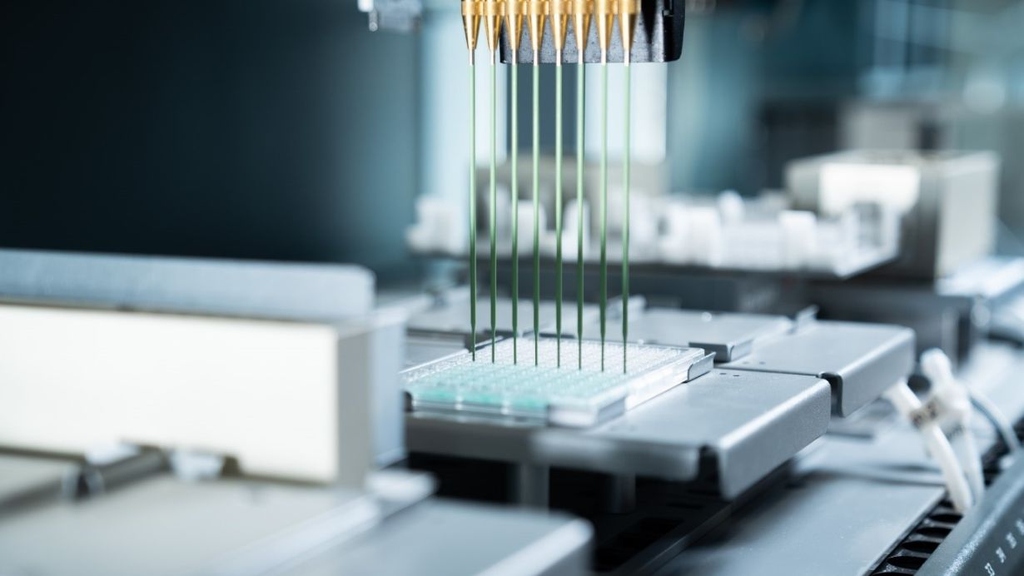
PHABIOC, a Karlsruhe Institute of Technology (KIT) spin-off, can replace up to four conventional sample holders with its SpecPlate, an innovative design that improves the efficiency, speed and precision of lab work while drastically reducing the amount of consumables. Mass production is now beginning.
Read Article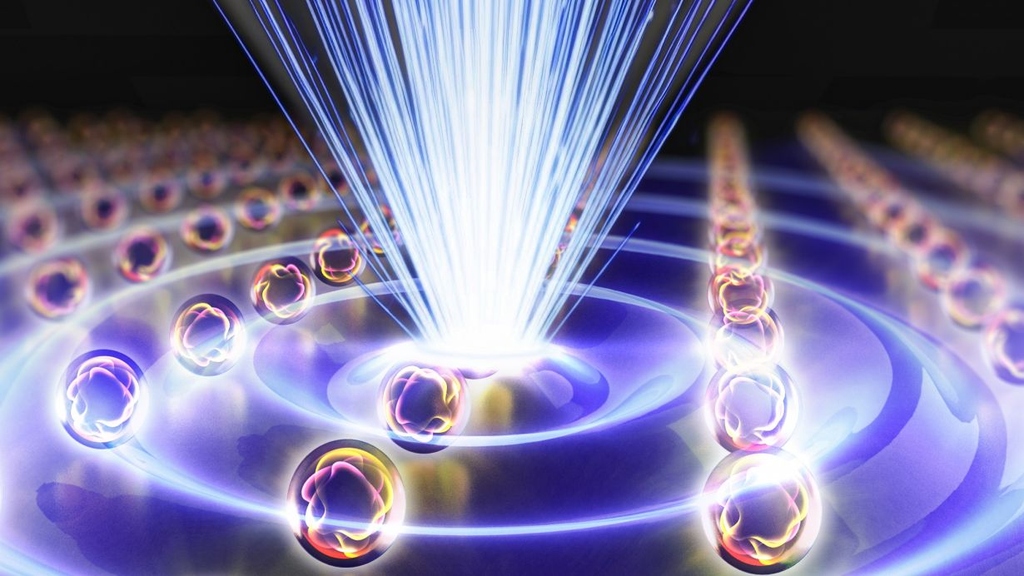
Photonic space-time crystals are materials that could increase the performance and efficiency of wireless communication or laser technologies. They feature a periodic arrangement of special materials in three dimensions as well as in time, which enables precise control of the properties of light. Working with partners from Aalto University, the University of Eastern Finland and Harbin Engineering University in China, scientists from the Karlsruhe Institute of Technology (KIT) have shown how such four-dimensional materials can be used in practical applications.
Read Article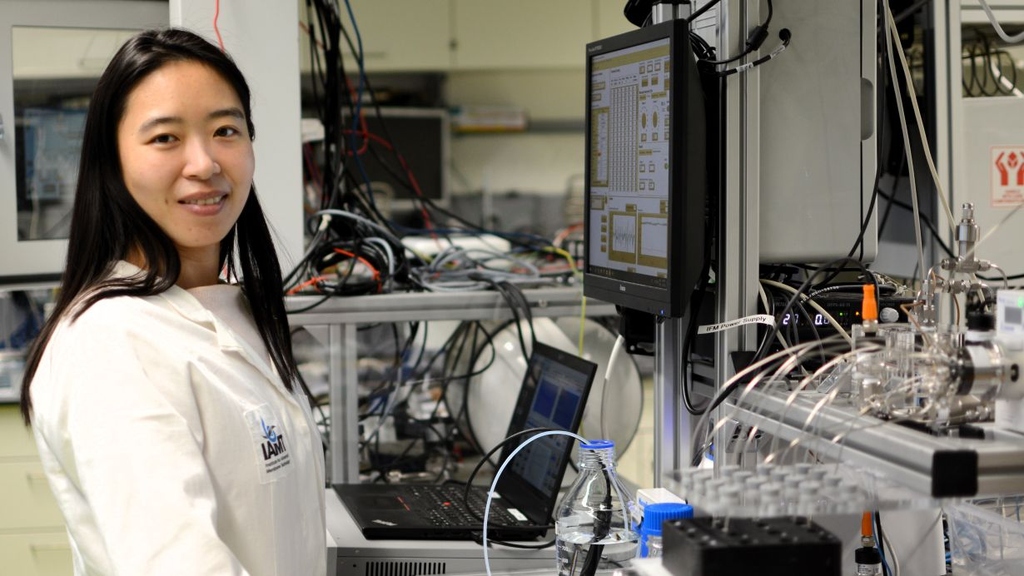
Steroid hormones are among the most widespread aquatic micropollutants. They are harmful to human health, and they cause ecological imbalances in aquatic environments. At the Karlsruhe Institute of Technology (KIT), researchers have investigated how steroid hormones are degraded in an electrochemical membrane reactor with carbon nanotube membranes. They found that adsorption of steroid hormones on the carbon nanotubes did not limit the hormones’ subsequent degradation.
Read Article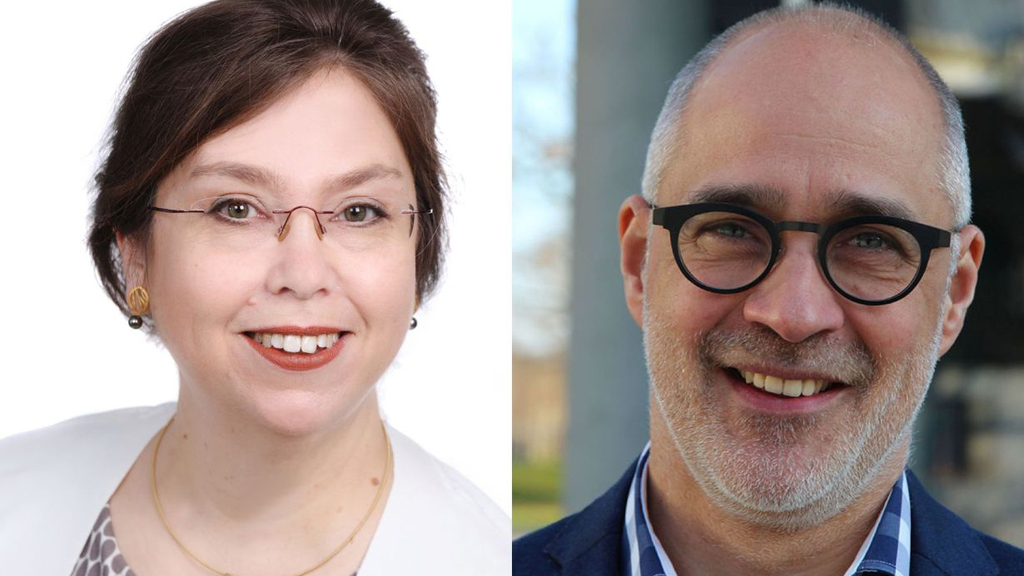
Researchers from the Karlsruhe Institute of Technology (KIT) have received grants from the Carl Zeiss Foundation’s CZS Wildcard program. In her project entitled UCART, physics professor Anke-Susanne Müller is working on a new radiation therapy method for directly irradiating tumors in the patient’s body with an electron accelerator. Electrobiotechnology professor Dirk Holtmann aims to develop a process for converting CO2 into useful chemicals in his CoMet2 project. With its Wildcard program, the Carl Zeiss Foundation (CZS) supports unconventional research projects with EUR 900,000 each for a period of two years.
Read Article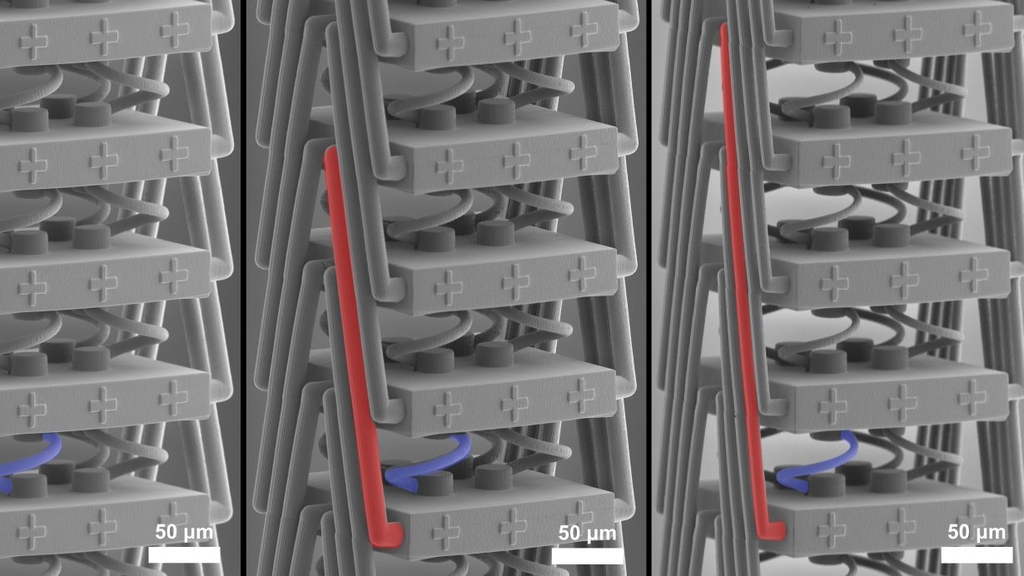
Metamaterials are artificial materials that do not occur in nature. Their components function like atoms in conventional materials but have special optical, electrical and magnetic properties. Interaction between the components is crucial to a metamaterial’s functionality. Previously a component could usually interact only with its immediate neighbors. Researchers at the Karlsruhe Institute of Technology (KIT) have developed a mechanical metamaterial with which these interactions can also be triggered at greater distances within the material. Potential uses of the material include measuring forces and structural monitoring.
Read Article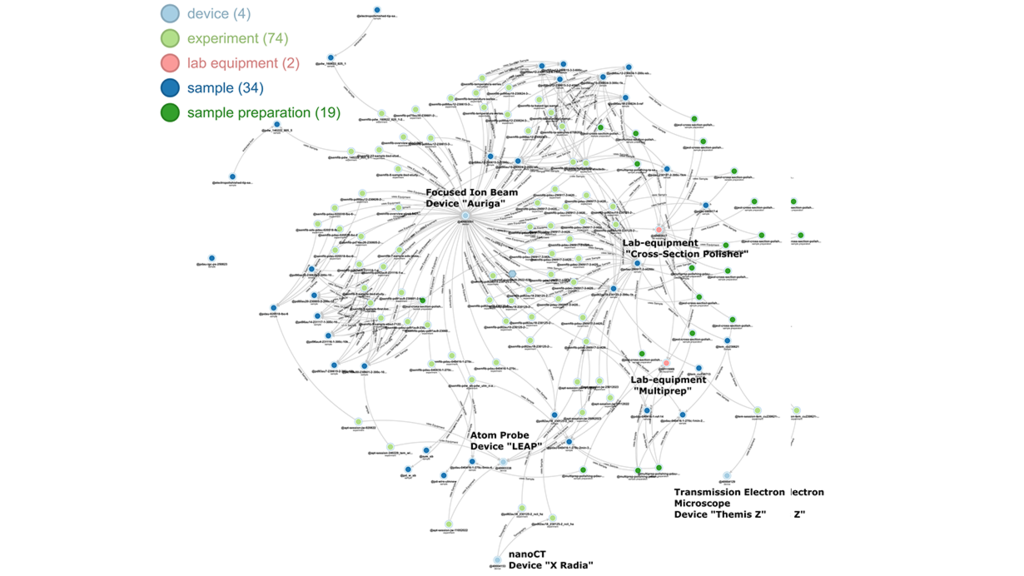
The paper introduces an approach in using the web-based application Kadi4Mat (KadiWeb) as an electronic laboratory notebook (ELN) combined with an integrated instrument database to facilitate Findable - Accessible - Interoperable - Reusabe (FAIR) research data.
This work was supported by the KIT Materials Center as part of the establishment of the pilot project „Materials Device Pool“.
Data Science Journal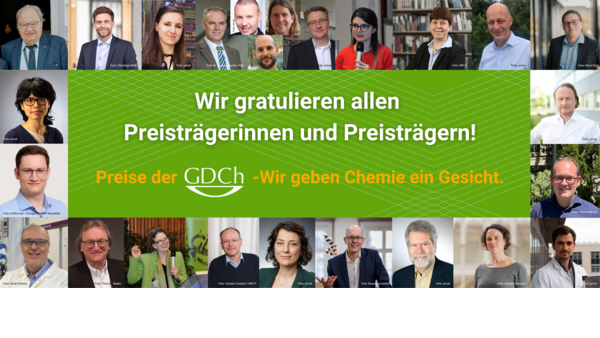
Prof. Dr. Peter W. Roesky (AOC) was awarded the Marianne Baudler Prize of the German Chemical Society (GDCh) for the year 2024 “for his innovative and groundbreaking contributions to lanthanide chemistry”. Prof. Roesky is an important player in MaTeLiS, initiator and contact person of the focus field Chemistry & Physics of Rare-Earth Materials.
The information has already been published on the project website. Please follow the link below.
Read More
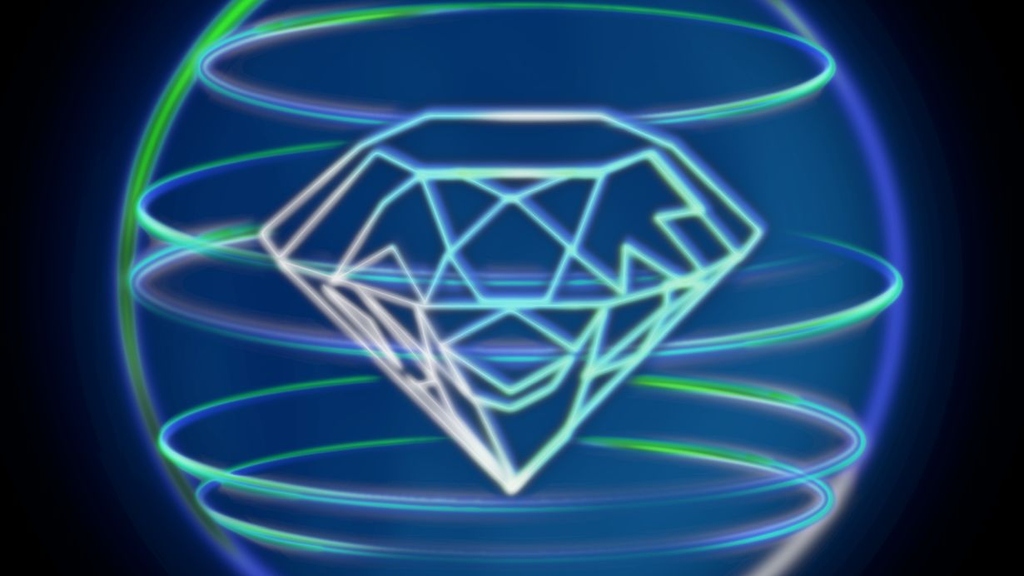
In a first for Germany, researchers at the Karlsruhe Institute of Technology (KIT) have shown how so-called tin vacancies in diamonds can be precisely controlled using microwaves. These vacancies have special optical and magnetic properties and can be used as qubits, the smallest computational units for quantum computing and quantum communication. The results are an important step for the development of high-performance quantum computers and secure quantum communications networks.
Read Article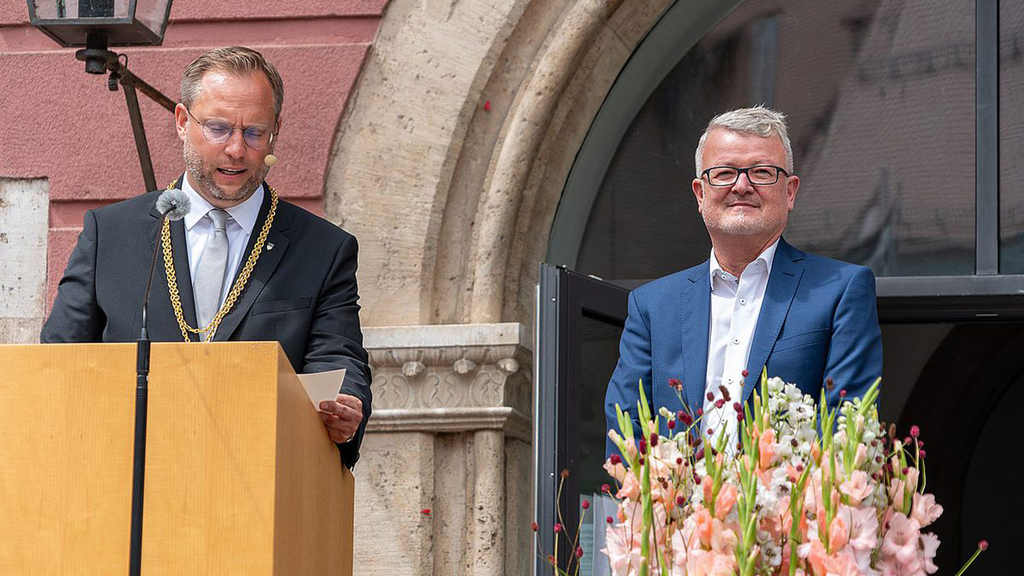
With his highly regarded research on sustainable battery storage systems, Professor Maximilian Fichtner, Director of the Helmholtz Institute in Ulm, has achieved several trailblazing breakthroughs – and he has contributed a great deal to the expansion and visibility of the strategic research field of energy conversion and storage at Ulm University. The chemist also succeeds in making these topics and activities visible to the public and communicating them in an understandable way. On Monday, 22 July, Fichtner received the Ulm Science Prize from Lord Mayor Martin Ansbacher for his work.
Read Article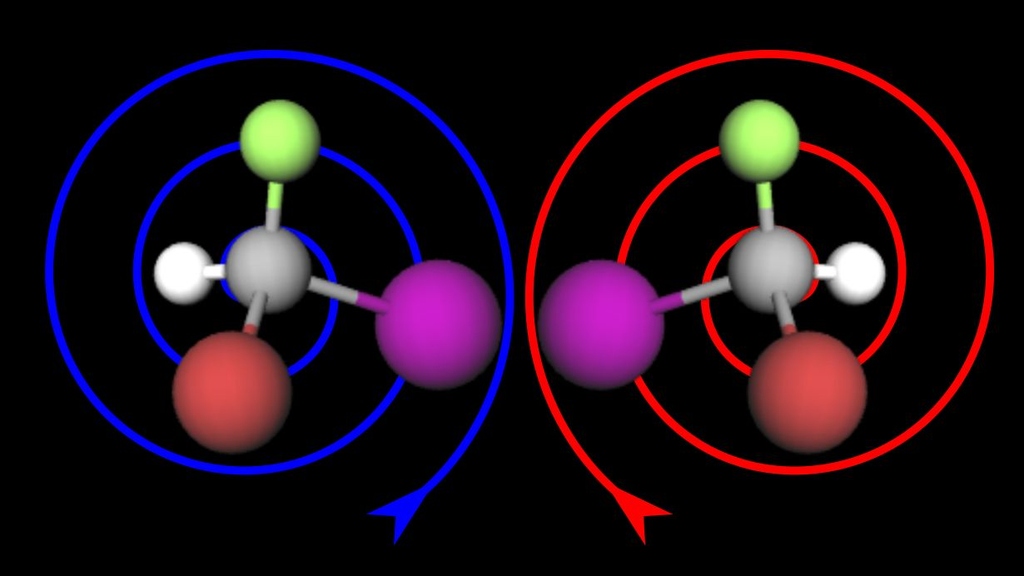
Researchers of Karlsruhe Institute of Technology (KIT) and Voxalytic GmbH developed a new method that allows, for the first time, to elucidate the chiral structure of molecules – the exact spatial arrangement of the atoms – by nuclear magnetic resonance (NMR) spectroscopy. This important step in the development of new drugs used to be a time-consuming process until now. The new method could now become a standard tool for the chemical and pharmaceutical industries.
Read Article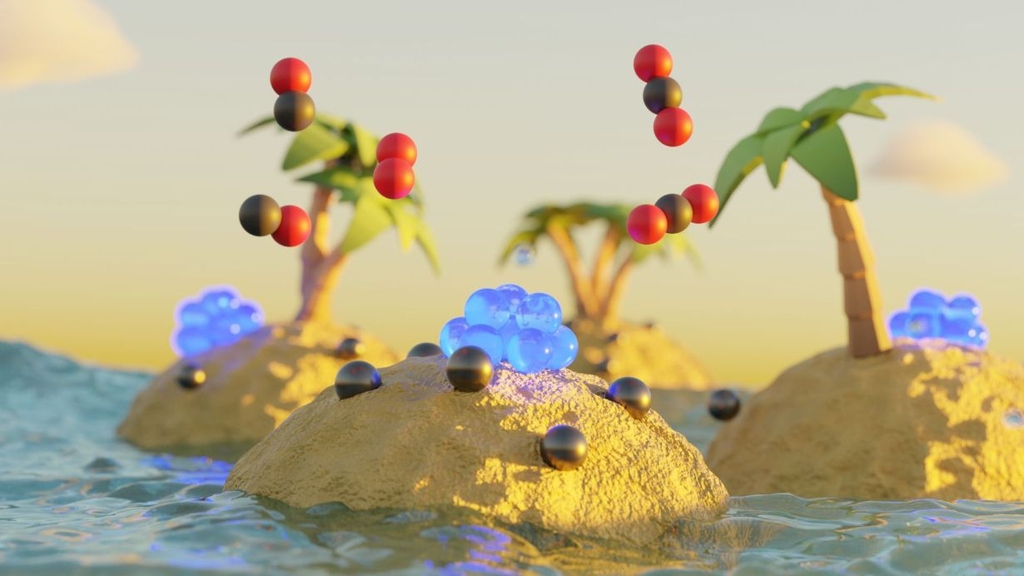
The production of more than 90 percent of all chemical products we use in our everyday lives relies on catalysts. Catalysts speed up chemical reactions, can reduce the energy required for these processes, and in some cases, reactions would not be possible at all without catalysts. Researchers of Karlsruhe Institute of Technology (KIT) have developed a concept that increases the stability of noble-metal catalysts and requires less noble metal for their production.
Read Article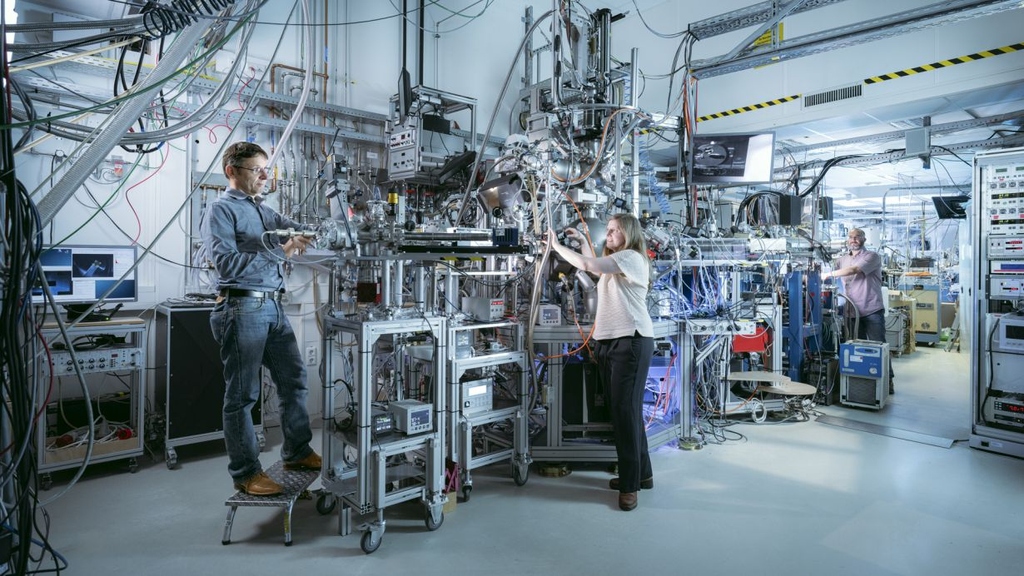
Using the new NAPXAS instrument at the Karlsruhe Research Accelerator (KARA), researchers at the Karlsruhe Institute of Technology (KIT) and the University of Münster aim to observe at the molecular level exactly how batteries charge and discharge. By making liquids accessible for synchrotron research with soft X-rays, NAPXAS provides unique insights into the processes at work in batteries.
Read Article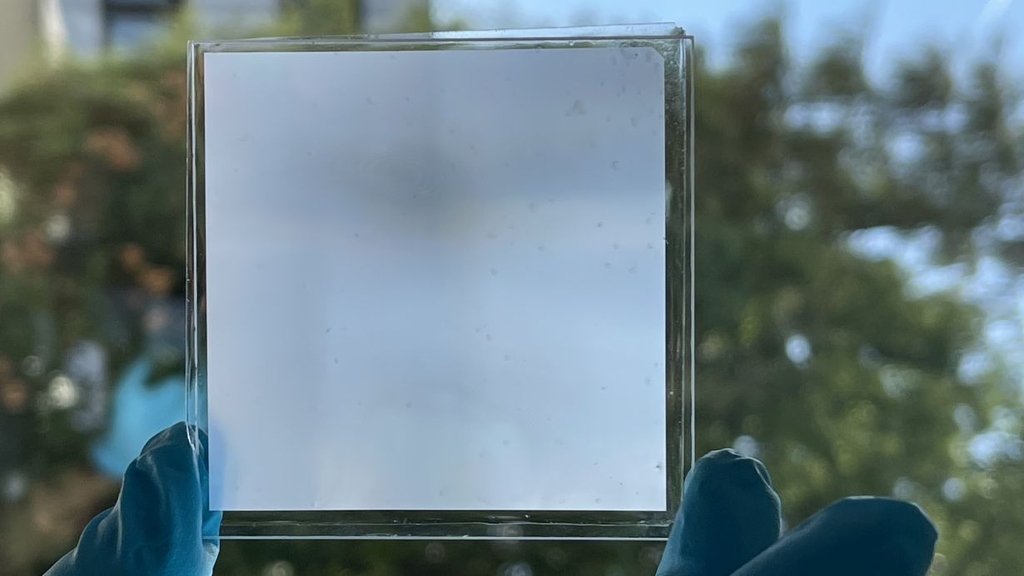
Researchers at the Karlsruhe Institute of Technology (KIT) introduce a polymer-based material with unique properties in the latest issue of the journal Nature Communications. This material allows sunlight to enter, maintains a more comfortable indoor climate without additional energy, and cleans itself like a lotus leaf. The new development could replace glass components in walls and roofs in the future. The research team has successfully tested the material in outdoor tests on the KIT campus.
Read Article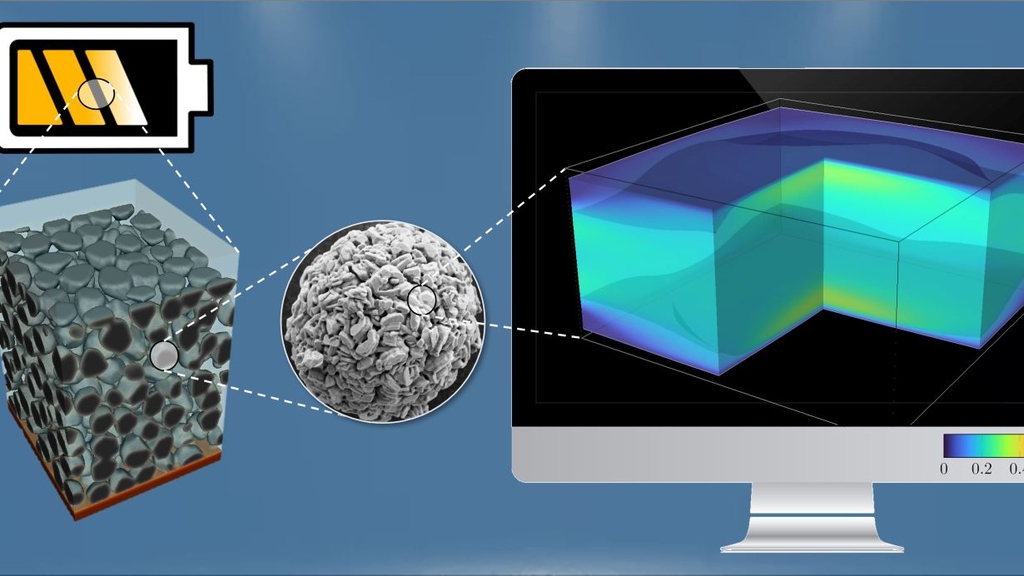
Which factors determine how quickly a battery can be charged? This and other questions are studied by researchers of Karlsruhe Institute of Technology (KIT) with the help of computer-based simulations. Microstructural models help to discover and investigate new electrode materials. When sodium-nickel-manganese oxide is used as cathode material in sodium-ion batteries, simulations reveal modifications of the crystal structure during charging. These modifications lead to an elastic deformation, as a result of which capacity decreases.
npj Computational Materials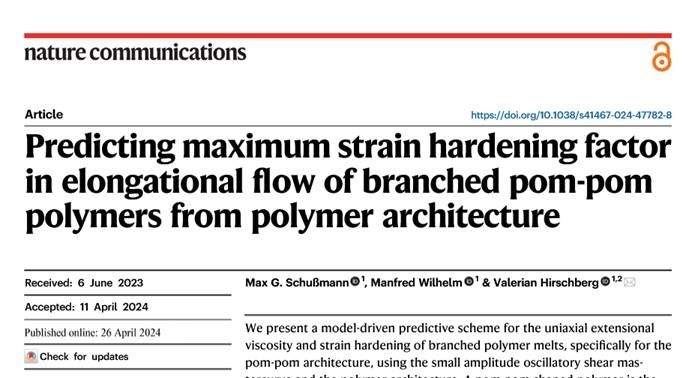
We present a model-driven predictive scheme for the uniaxial extensional viscosity and strain hardening of branched polymer melts, specifically for the pom-pom architecture, using the small amplitude oscillatory shear mastercurve and the polymer architecture. A pom-pom shaped polymer is the simplest architecture with at least two branching points, needed to induce strain hardening. It consists of two stars, each with q arms of the molecular weight Mw,a, connected by a backbone of Mw,b.
Nature Communications
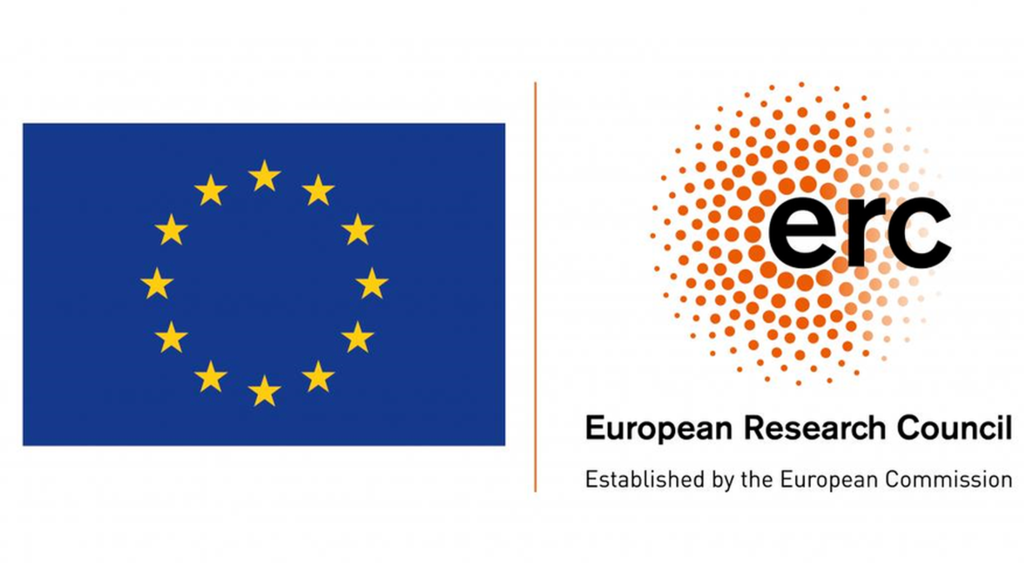
On April 1, 2024, Xufei Fang started his ERC Starting Grant awarded by the European Research Council (ERC) at the IAM-MMI.
His project MECERDIS aims to fundamentally understand the mechanisms of dislocations in ceramics and help tailor new functional ceramic materials.
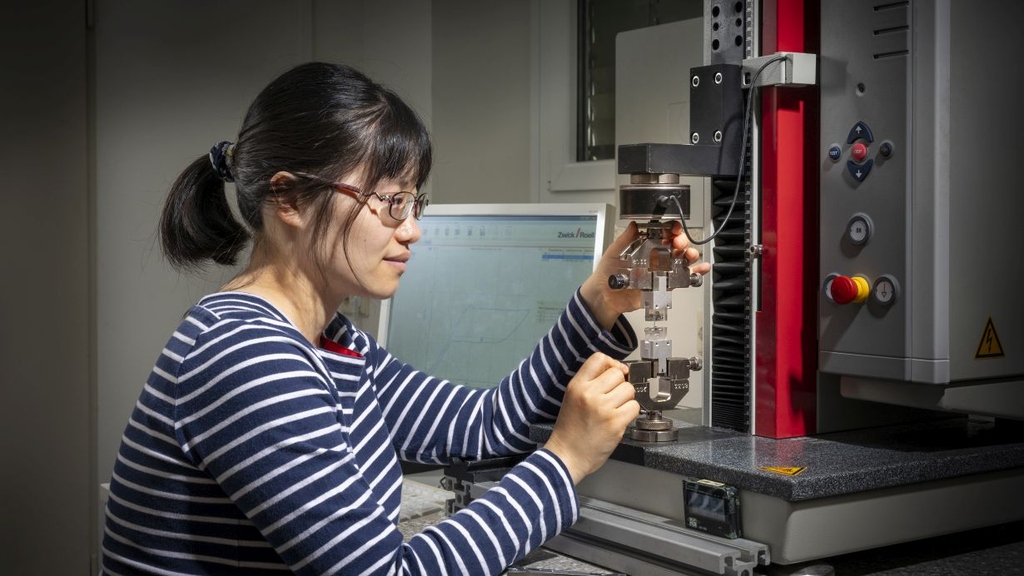
With the Leopoldina Prize for young scientists 2023, German National Academy of Sciences Leopoldina honors Dr. Jingyuan Xu, who researches novel heating and cooling technologies for the energy transition at Karlsruhe Institute of Technology (KIT). Currently, the young engineer can boast two more significant awards: the Hector RCD Award as well as admission to the Global Young Academy, an exclusive association of international young scientists.
Read Article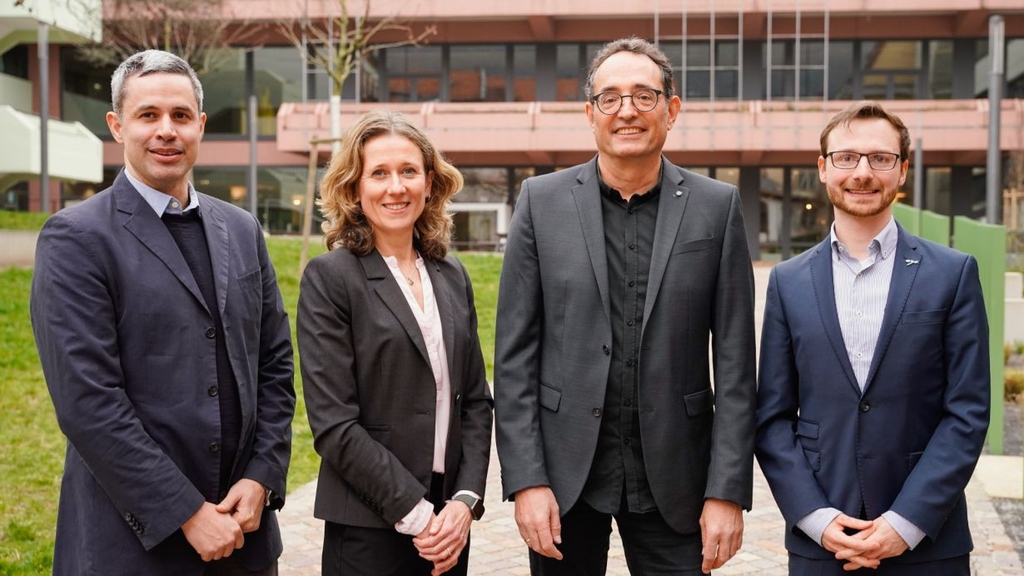
Applying and developing new technologies for DNA synthesis to pave the way for producing entire artificial genomes – that is the goal of a new interdisciplinary center that is being established at Heidelberg University, Karlsruhe Institute of Technology (KIT), and Johannes Gutenberg University Mainz (JGU). The aim of the Center for Synthetic Genomics is to spark new developments in synthetic genomics through basic research and technology development using methods of artificial intelligence. The Carl Zeiss Foundation (CZS) is financing the center’s establishment over a period of six years with a total amount of twelve million euros.
Read Article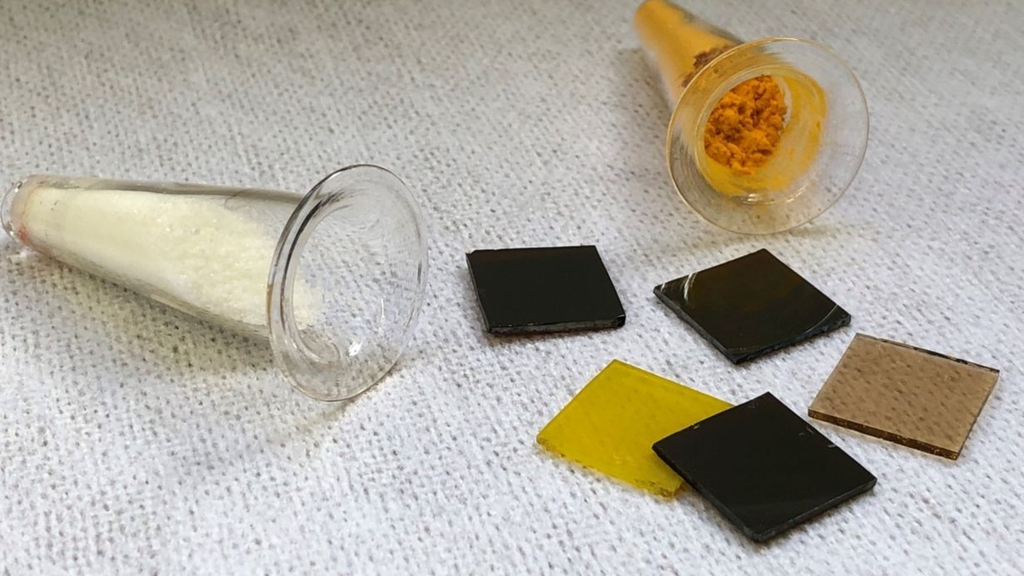
Research and industry worldwide work on the commercialization of perovskite photovoltaics. Most research laboratories focus on solvent-based manufacturing processes, because these methods are versatile and easy to use. Established photovoltaic industries, however, almost exclusively apply vacuum processes for the deposition of high-quality thin films. An international consortium led by Karlsruhe Institute of Technology (KIT) and the US Department of Energy’s National Renewable Energy Laboratory (NREL, USA) has now analyzed this critical discrepancy between laboratory and industry. They emphasize that if improved, industrially tested vacuum processes could contribute to the rapid commercialization of perovskite solar cells.
Read Article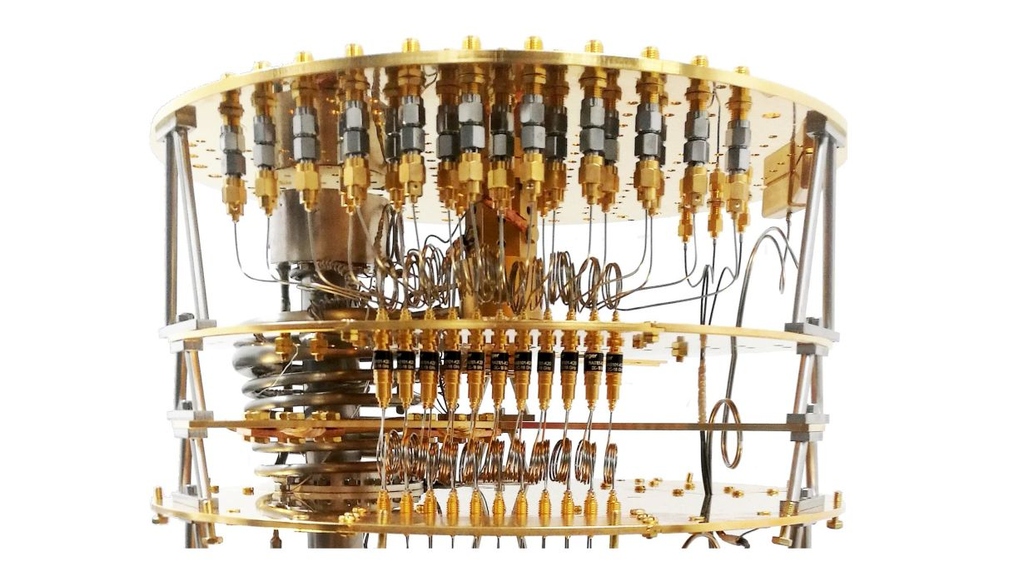
Physicists from Forschungszentrum Jülich and the Karlsruhe Institute of Technology have uncovered that Josephson tunnel junctions – the fundamental building blocks of superconducting quantum computers – are more complex than previously thought. Just like overtones in a musical instrument, harmonics are superimposed on the fundamental mode. As a consequence, corrections may lead to quantum bits that are 2 to 7 times more stable.
Read Article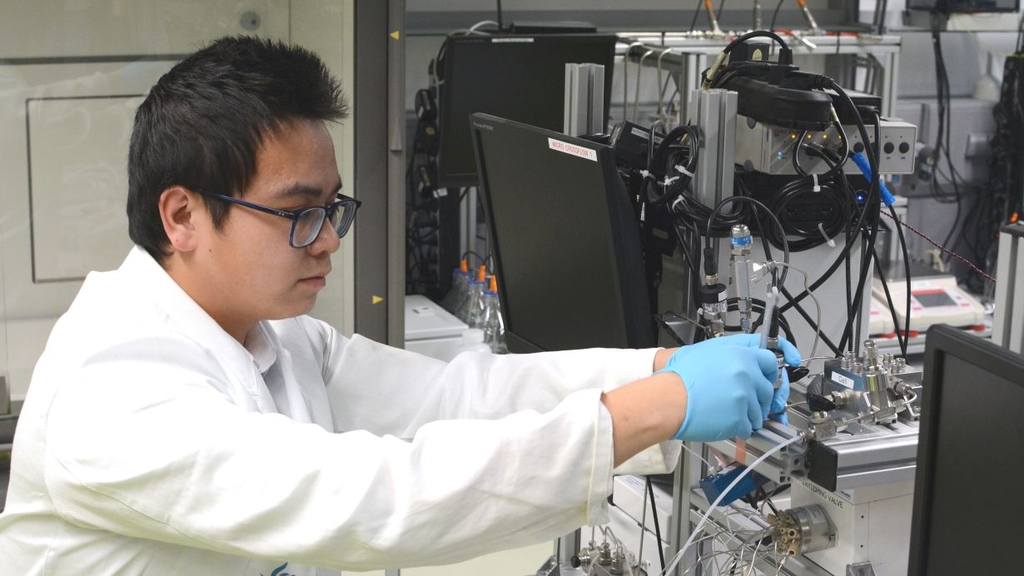
Membranes of vertically aligned carbon nanotubes (VaCNT) can be used to clean or desalinate water at high flow rate and low pressure. Recently, researchers of Karlsruhe Institute of Technology (KIT) and partners carried out steroid hormone adsorption experiments to study the interplay of forces in the small pores. They found that VaCNT of specific pore geometry and pore surface structure are suited for use as highly selective membranes.
Read Article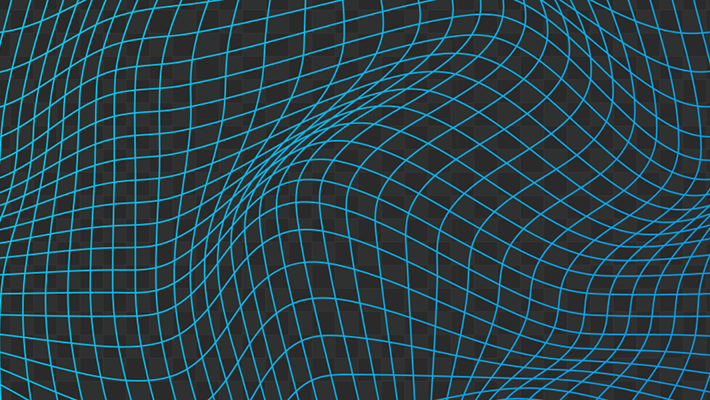
In solid state materials, changes in the crystal lattice are often accompanied by changes in the electronic system. Whether the lattice or the electrons is the primary driver of a transition may, however, be difficult to ascertain. Noad et al. measured the Young’s modulus in the extremely clean material Sr2RuO4 as it underwent an electronic (Lifshitz) transition. The researchers found a large drop in the Young’s modulus at the transition, suggesting that conduction electrons drive a nonlinear elastic response in this material.
Science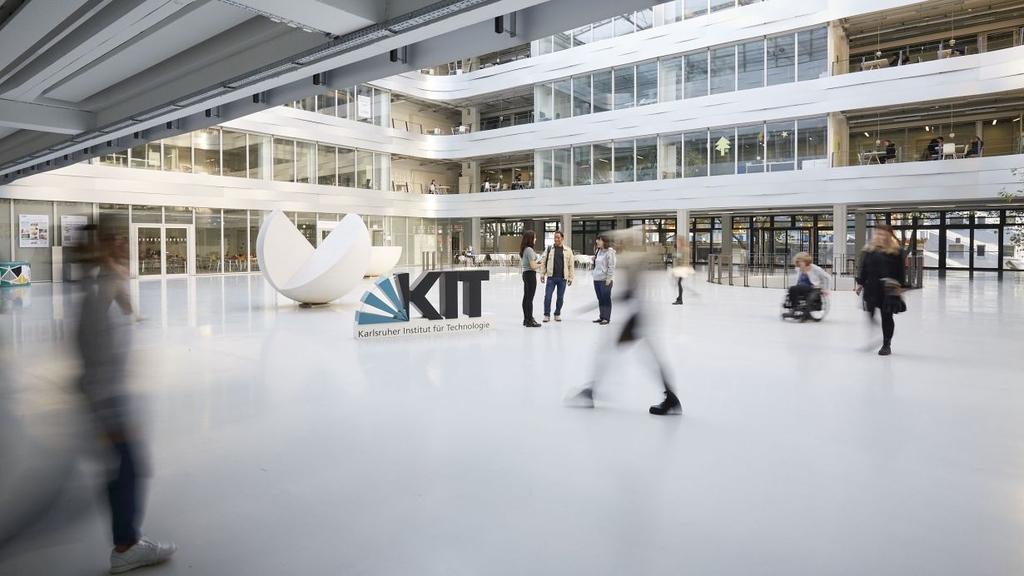
With one new full proposal, Karlsruhe Institute of Technology (KIT) will go into the final of the “Clusters of Excellence” funding line of the Excellence Strategy Competition launched by the federal and state governments. KIT’s sketch of a chemical platform for highly precise quantum architectures convinced the international expert jury. The results of the first selection round were announced by the German Research Foundation (DFG) and the Council of Science and Humanities (WR) this morning (February 2, 2024). In addition, KIT and its partners will submit renewal proposals for the two existing Clusters of Excellence on 3D designer materials and battery research.
Read Article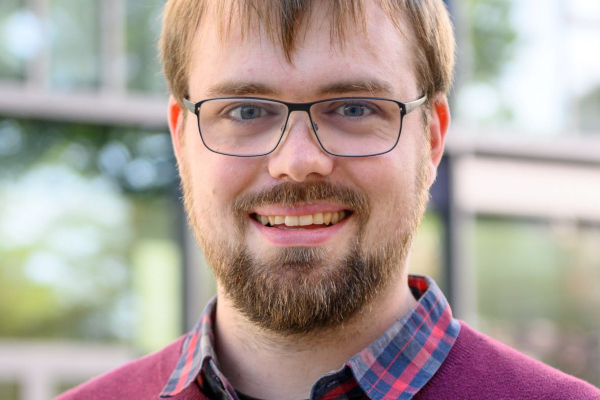
The DFG has awarded Sören Lehmkuhl with an Emmy Noether Independant Junior Research group. The central research goal will be to develop a new sensor based on the RASER approach.
Read Article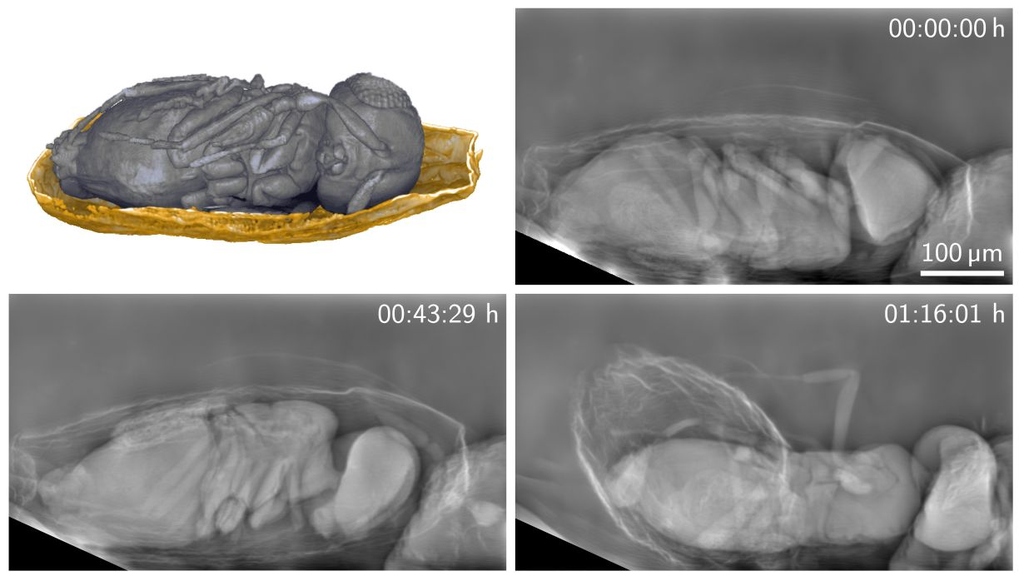
Researchers from Karlsruhe Institute of Technology (KIT) and partners all over Germany have developed a new system for X-ray imaging, which is suited for both living specimens and sensitive materials. The system records images of micrometer resolution at a minimum radiation dose. In a pilot study, the researchers tested their method on living parasitic wasps and observed them for more than 30 minutes. They report in Optica.
Read Article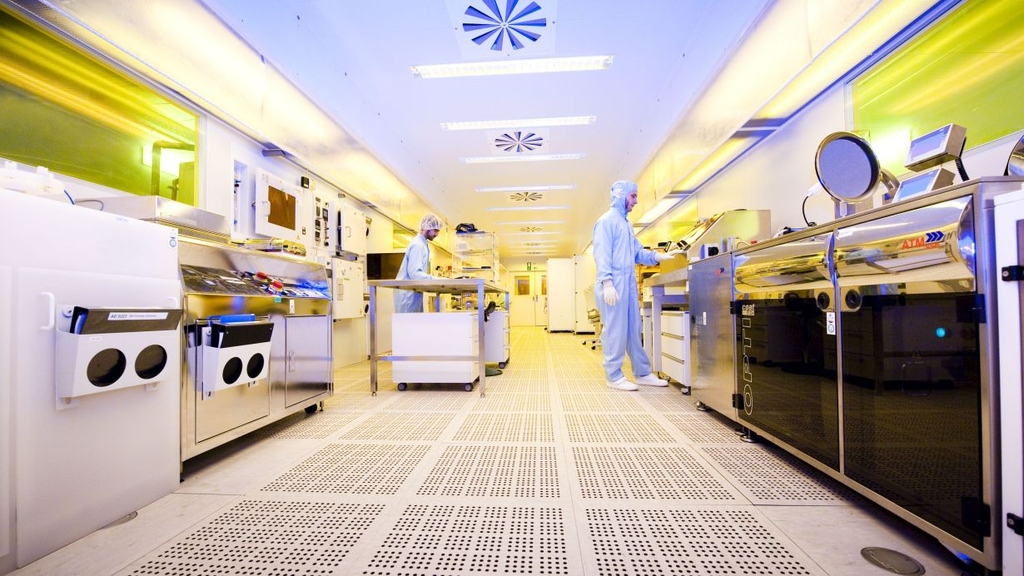
The Karlsruhe Center for Optics and Photonics (KCOP) is taking shape. At the new, highly modern technology center of Karlsruhe Institute of Technology (KIT), research teams will work on applications of light or photons. These include highly efficient photovoltaics, 6G communication and glass fiber networks, novel quantum sensors, superconducting detectors, extremely fast 3D image acquisition, and high-resolution microscopy for life sciences. The 56 million Euro building is planned to be inaugurated in early 2026.
Read Article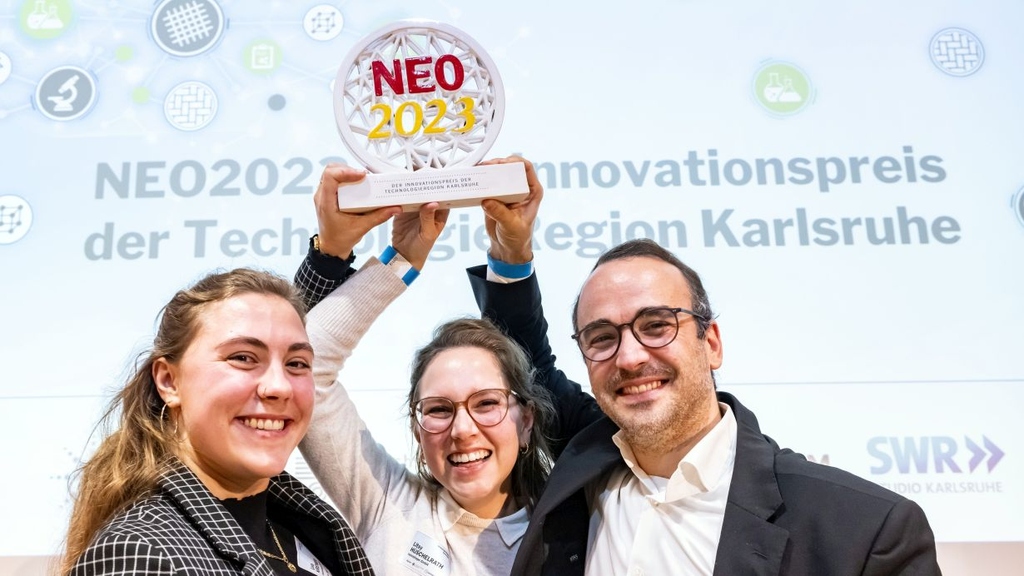
Yesterday evening (November 30, 2023) nanoshape GmbH, a startup of Karlsruhe Institute of Technology (KIT), won the NEO2023 Jury Prize in the amount of EUR 20,000 of the Karlsruhe Technology Region for its surface technology to prevent inflammations of implants. Researchers of KIT’s Institute for Mechanical Process Engineering and Mechanics (MVM) were granted the Prize of the Audience for their electrically conductive and printable adhesive that can be used in microelectronic and solar modules.
Read Article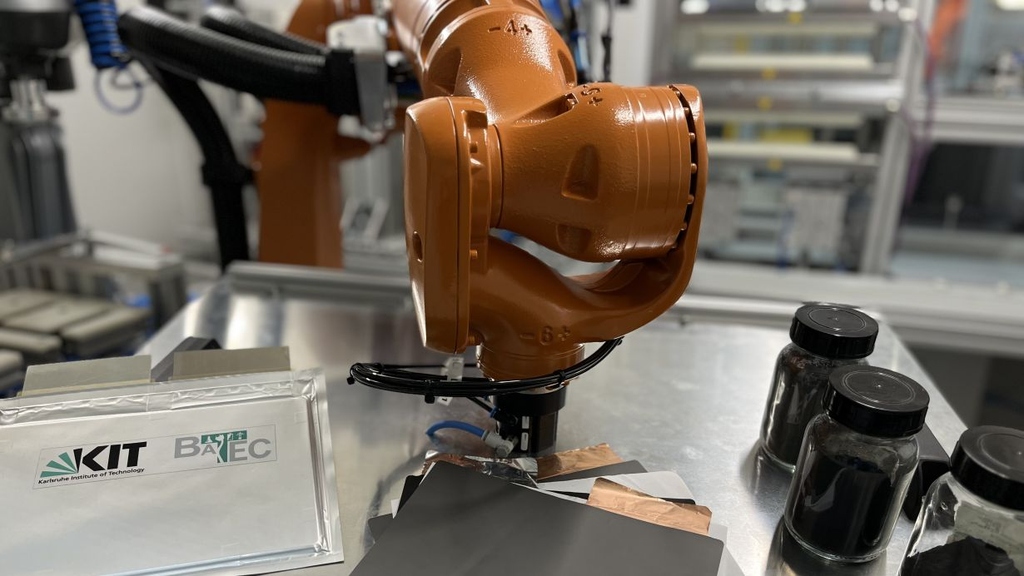
The market for electric cars is growing rapidly and so does the need for lithium-ion batteries. Their recycling is an important part of the production cycle. Current methods are based on the decomposition of active battery materials into their molecular constituents, which is associated with a high consumption of energy and chemicals. Researchers of Karlsruhe Institute of Technology (KIT) and industry partners have now launched a collaboration to develop a more efficient recycling process for spent batteries, by means of which the active components are recovered while maintaining their functionality. The project is funded by the Federal Research Ministry with approximately EUR 3 million.
Read Article
...Goes to Chemist Thalappil Pradeep
read article
Key to Better Manufacturing
read article
of the phase diagram of Sr2RuO4
nature
Editor of the section on Design and Data: Prof. Dr.-Ing. Christoph Klahn, MVM, KIT
read more







































































































Professor Horst Hahn, Director of the Institute of Nanotechnology at KIT, was elected Fellow of the National Academy of Inventors (NAI) in the USA. He will receive the award in April 2020 at the annual meeting of the NAI in Phoenix, Arizona.
Futher information: NAI press release

Ceremonial award of the Order of Merit of the Federal Republic of Germany to the Karlsruhe scientist on the Day of German Unity. Professor Britta Nestler researches and teaches at the KIT as well as at the Karlsruhe University of Applied Sciences. She was honoured for her scientific achievements, especially for her pioneering role in combining basic and applied research.
Further information can be found here.

The current issue of lookKIT highlights the topic materials. The KIT Materials Center contributes in various ways, from fundamental research to applications, and integrates research groups from natural, engineering and life sciences that have a common interest in innovative development.

Prof. Dr. Wöll and Prof. Dr. Wenzel, who initiated the project in March 2018, are guest editors. The KIT Special Issue contains a total of 27 publications by scientists from the KIT Center Materials, on a broad range of topics. It is available online since June 27, 2019. Please have a look at following link:

Carbon dioxide is not only a greenhouse gas in the atmosphere leading to global-warming effect, it can also be a useful raw material for chemical reactions. A working group at KIT is using carbon dioxide as a raw material to produce graphene, a technological material which is currently the subject of intense study. The work on this unusual application has been reported in the ChemSusChem journal (DOI: 10.1002/cssc.201901404).

The search for new active substances, their production, characterization, and screening for biological effectiveness are very complex and costly. Scientists of KIT have now succeeded in combining these processes on a chip and, hence, facilitating and accelerating the procedures to produce promising substances. The results are published in Nature Communications (DOI 10.1038/s41467-019-10685-0).

On Tuesday, June 4, 2019 at 6:30 PM, scientists from the KIT Materials Center will present their research on new technologies in the Karlsruhe City Hall.

Scientists at the KIThave used granular aluminum (nicknamed grAl) for qubits and have shown that this superconducting material has great potential to overcome the previous limits of quantum hardware.
Work published in the journal Nature Materials (DOI: 10.1038 / s41563-019-0350-3).

The First Prize of the BMBF Validation Award Goes to the ARES “Air-retaining Surfaces” Project on Bionic Ship Coatings that Reduce Friction between Ship Walls and Water. Friction, corrosion, and biofilms are three major problems in shipping. The research project ARES – a collaboration project of KIT and the universities of Bonn and Rostock – studies new types of ship coatings that permanently retain an air layer under water and, thus, help considerably reduce the three problems.
Please have a look here.

Development of a new system for the efficient and precise production of printed micro- and nanostructures from several materials. Integration of a microfluidic chamber for the fluids on smallest space directly into a 3D laser lithography device. Work published in Science Advances 5, 2019.

3D-printed structures, responsive to external stimuli. Instead of temperature, focused light is used as a control signal. For the first time, this allows the targeted control of individual microstructures in a complex, three-dimensional arrangement.The results are published in Nature Communications 10, 2019.

Professor Wolfgang Wernsdorfer of KIT receives the Gottfried Wilhelm Leibniz Prize 2019 of the German Research Foundation (DFG). Germany’s highest science prize endowed with EUR 2.5 million honors the experimental physicist for his research into electronics, spin physics, and quantum computing.

Industry consumes large quantities of crude oil to produce basic substances for drugs, cosmetics, plastics, or food. However, these processes consume a lot of energy and produce waste. Biological processes with enzymes are far more sustainable. The protein molecules can catalyze various chemical reactions without auxiliary materials or solvents being required. But they are expensive and, hence, have been economically unattractive so far. Researchers of KIT have now developed a new biomaterial that considerably facilitates the use of enzymes. The results are presented in the journal Angewandte Chemie, Oct. 2018.

High-temperature superconductors can transport electrical energy without resistance. Researchers at KIT have carried out high-resolution inelastic x-ray scattering and have found that high uniaxial pressure induces a long-range charge order competing with superconductivity. Their study opens up new insights into the behavior of correlated electrons. The researchers report on it in the journal Science, Nov. 2018.

Polymer pelts made of the finest of fibers are suitable for many different applications, from coatings that adhere well and are easy to remove to highly sensitive biological detectors. Researchers at KIT together with scientists in the United States have now developed a cost-effective process to allow customized polymer nanofibers to grow on a solid substrate through vapor deposition of a liquid crystal layer with reactive molecules. The researchers report on their innovative method in the journal Science, Nov. 2018.

Quantum computers can execute many computation steps in parallel. This will accelerate processing of large data volumes. The microstructure of certain materials and elements of the quantum bits, however, is of crucial importance. Researchers KIT study materials for such multi-functional quantum bits.
“A promising approach to the next generation of quantum computers is based on materials, single systems of which are not larger than an atom and the quantum properties of which can be accessed and controlled optically,” says Professor David Hunger of KIT’s Physikalisches Institut, who coordinates the SQUARE project.

KIT has successfully acquired funding for two clusters of excellence within the Excellence Strategy launched by the federal and state governments. The Excellence Commission has agreed to fund KIT’s proposals in the area of energy research and materials science for a period of seven years.
In future, the following clusters of excellence will be funded at KIT:
3D Designer Materials – 3D Matter Made to Order (Part of the KIT-Centre Materials)
Spokespersons: Professor Martin Wegener (KIT) and Professor Uwe H.F. Bunz (Heidelberg University)
More information: www.3dmattermadetoorder.kit.edu
Energy Storage beyond Lithium – New Concepts for a Sustainable Future (Part of the KIT-Centre Energy)
Spokespersons: Professor Maximilian Fichtner (KIT and Ulm University), Professor Helmut Ehrenberg (KIT), and Professor Axel Groß (Ulm University)

3D printing by direct laser writing enables production of micro-meter-sized structures for many applications, from biomedicine to microelectronics to optical metamaterials. KIT researchers have now developed 3D inks that can be erased selectively. This allows specific degradation and reassembly of highly precise structures on the micrometer and nanometer scales. The new photoresists are presented in the journal Nature Communications, July 2018

KIT scientists, together with experts for dental implants, have now developed a nanostructured surface to accelerate wound healing after implantation and to better protect it against the attack of bacteria.

Innovative Method for Steel Strip Drying – The KIT-Institute of Combustion Technology of the Engler-Bunte Institute is coordinating the research project in the EU’s Horizon 2020. Thanks to a new furnace design, energy efficiency in industrial steel strip drying can be significantly increased and the size of the facility drastically reduced. Using the planned process, investment and production costs can be cut by at least 40 percent. This is achieved through the use of infrared radiant burner technology.

Pure quartz glass is highly transparent and resistant to thermal, physical, and chemical impacts. These are optimum prerequi-sites for use in optics, data technology or medical engineering. For efficient, high-quality machining, however, adequate pro-cesses are lacking. Scientists of KIT have developed a forming technology to structure quartz glass like a polymer. This innovation is reported in the journal Advanced Materials, 2018
Video: Glassomer-Processing Fused Silica Glass Like a Polymer

Under the AIRCOAT EU project, researchers from all over Europe develop an air coating that reduces frictional resistance of ships. They use the salvinia effect studied by KIT, it allows an air layer to permanently exist under water. The project is coordinated scientifically by physicist and nanotechnology expert Professor Thomas Schimmel, KIT.

The electronic nose, like the human nose, perceives complex gas mixtures – i.e. scents – and can recognize them based on specific signal patterns.The objective of smelldect is to develop a low-cost olfactory sensor suited for mass production and everyday use.

KIT Scientists Design Chemical Compounds for Use as Passwords for Encrypted Information. They use a new and highly secure approach by combining computer science with chemistry and a conventional encryption method with a chemical password. Their development is now reported in an open access publication in Nature Communications, April 2018.

New ZEISS Site at One of the Most Innovative Locations in Germany – New Space for Spinoffs and Enhanced Collaboration between Business and Academia – 12,000 m2 of Flexible Space Thanks to an Investment of EUR 30 Million

KIT’s Startup otego GmbH Has Developed “oTEG,“ the First Commercial Printed Thermoelectric Generator Worldwide.

Solar cells with efficiencies above 20% and produced at low costs – perovskites make this possible. Now, KIT-researchers have gained fundamental insight into the function of perovskite solar cells. They found that bound states of electron-hole pairs can form during the absorption of light. Still, these pairs can be separated easily for current to flow. In addition, they enhance absorption.

Researchers of KIT have how developed a new solution for the coupling of optical microchips to each other or to optical fibers. They use tiny beam-shaping elements that are printed directly onto the facets of optical components by a high-precision 3D printing process. These elements can be produced with nearly any three-dimensional shape and enable low-loss coupling of various optical components with a high positioning tolerance.

Graphic representation of measurement with a laser beam on a bullet. (Graphics: Christian Grupe, Philipp Trocha, KIT)
Microresonator-based optical frequency combs enable highly-precise optical distance ranging at a rate of 100 million measurements per second – publication in Science, Feb. 2018

Revolutionary 3D Laser Printing Process Is Used Worldwide – The German Physical Society Honors the Institute of Nanotechnology and the Innovation Management Service Unit of KIT as well as the Nanoscribe company.

Fungi may be harmful pathogens. On the other hand, they are used for the production of food or medicine and in bioengineering. In either case, it is required to precisely understand their growth mechanism.Using high-performance light microscopy, KIT-Researchers watched mold fungi as they grew in the cell. The findings are presented in Science Advances.

Report on a growth study of self-catalyzed GaAs nanowires based on time-resolved in situ X-ray structure characterization during molecular-beam-epitaxy in combination with ex situ scanning-electron-microscopy.
Nano Lett., Jan 2018
A surface-confined multistep reaction allows for the observation of the emergence of complexity through the formation of a defect-tolerant molecular network.

Kräfte von oben werden über Stege auf die senkrecht stehenden Ringstrukturen übertragen. Deren
Rotation übt zieht an den Ecken der waagerechten Flächen des Würfels.
Pressemitteilung des KIT

Transparente Beschichtung für Alltagsanwendungen
Neuer Werkstoff „Fluoropor“ lässt Wasser abperlen und widersteht Abrieb dank durchgehender Nano-/Mikrostruktur.
„Fluoropor“ als Beschichtung auf einer Kupfer-Dünnschicht.

Wissenschaftler am KIT kopieren Mikrostrukturen auf der Blüte und erhöhen die Leistung von Solarzellen

Neues Multifunktions-Elektronenmikroskop am KIT kann Strukturen in empfindlichen Materialien aufspüren. Nahaufnahme des neuen Multifunktions-Elektronenmikroskops am KIT.

Supraleitender Quantensimulator übertrifft konventionellen Computer und könnte komplizierte biologische Prozesse wie den Pflanzenstoffwechsel abbilden
Quantenbits können im Gegensatz zu klassischen Bits zwei Zustände zugleich annehmen: rechts und links, gelb und blau, Null und Eins.

Zwei Lenz-Linsen in einem Helmholtz-Spulenpaar angeordnet. Die Simulation zeigt, wie die Lenz-Linsen den magnetischen Fluss räumlich fokussieren.
Presseinformation des KIT
Hirnentwicklung in der Petrischale: Axone (gruen) der Nervenzellen der Netzhaut lesen beim Wachstum mit molekularen Antennen (magenta) an ihrem Ende chemische Signale, die zum Ziel führen.
Presseinformation des KIT
